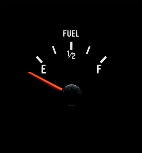 Can Saudi Arabia continue to supply the world with as much oil as it needs? I recently travelled to Saudi Arabia to find out whether a problem is on the horizon. The article I wrote, The Breaking Point, is the cover story of this week’s New York Times Magazine. “The largest oil terminal in the world, Ras Tanura, is located on the eastern coast of Saudi Arabia, along the Persian Gulf,” the story begins. “From Ras Tanura’s control tower, you can see the classic totems of oil’s dominion — supertankers coming and going, row upon row of storage tanks and miles and miles of pipes. Ras Tanura, which I visited in June, is the funnel through which nearly 10 percent of the world’s daily supply of petroleum flows. Standing in the control tower, you are surrounded by more than 50 million barrels of oil, yet not a drop can be seen. The oil is there, of course. In a technological sleight of hand, oil can be extracted from the deserts of Arabia, processed to get rid of water and gas, sent through pipelines to a terminal on the gulf, loaded onto a supertanker and shipped to a port thousands of miles away, then run through a refinery and poured into a tanker truck that delivers it to a suburban gas station, where it is pumped into an S.U.V. — all without anyone’s actually glimpsing the stuff. So long as there is enough oil to fuel the global economy, it is not only out of sight but also out of mind, at least for consumers. I visited Ras Tanura because oil is no longer out of mind…”
Can Saudi Arabia continue to supply the world with as much oil as it needs? I recently travelled to Saudi Arabia to find out whether a problem is on the horizon. The article I wrote, The Breaking Point, is the cover story of this week’s New York Times Magazine. “The largest oil terminal in the world, Ras Tanura, is located on the eastern coast of Saudi Arabia, along the Persian Gulf,” the story begins. “From Ras Tanura’s control tower, you can see the classic totems of oil’s dominion — supertankers coming and going, row upon row of storage tanks and miles and miles of pipes. Ras Tanura, which I visited in June, is the funnel through which nearly 10 percent of the world’s daily supply of petroleum flows. Standing in the control tower, you are surrounded by more than 50 million barrels of oil, yet not a drop can be seen. The oil is there, of course. In a technological sleight of hand, oil can be extracted from the deserts of Arabia, processed to get rid of water and gas, sent through pipelines to a terminal on the gulf, loaded onto a supertanker and shipped to a port thousands of miles away, then run through a refinery and poured into a tanker truck that delivers it to a suburban gas station, where it is pumped into an S.U.V. — all without anyone’s actually glimpsing the stuff. So long as there is enough oil to fuel the global economy, it is not only out of sight but also out of mind, at least for consumers. I visited Ras Tanura because oil is no longer out of mind…”
The Breaking Point

